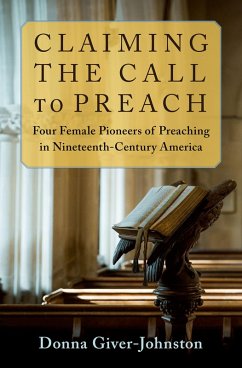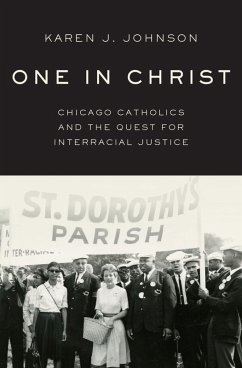
Escaped Nuns (eBook, PDF)
True Womanhood and the Campaign Against Convents in Antebellum America

PAYBACK Punkte
8 °P sammeln!
Just five weeks after its publication in January 1836, Awful Disclosures of the Hotel Dieu Nunnery, billed as an escaped nun's shocking expos? of convent life, had already sold more than 20,000 copies. The book detailed gothic-style horror stories of licentious priests and abusive mothers superior, tortured nuns and novices, and infanticide. By the time the book was revealed to be a fiction and the author, Maria Monk, an imposter, it had already become one of the nineteenth century's best-selling books. In antebellum America only one book, Uncle Tom's Cabin, outsold it. The success of Monk's b...
Just five weeks after its publication in January 1836, Awful Disclosures of the Hotel Dieu Nunnery, billed as an escaped nun's shocking expos? of convent life, had already sold more than 20,000 copies. The book detailed gothic-style horror stories of licentious priests and abusive mothers superior, tortured nuns and novices, and infanticide. By the time the book was revealed to be a fiction and the author, Maria Monk, an imposter, it had already become one of the nineteenth century's best-selling books. In antebellum America only one book, Uncle Tom's Cabin, outsold it. The success of Monk's book was no fluke, but rather a part of a larger phenomenon of anti-Catholic propaganda, riots, and nativist politics. The secrecy of convents stood as an oblique justification for suspicion of Catholics and the campaigns against them, which were intimately connected with cultural concerns regarding reform, religion, immigration, and, in particular, the role of women in the Republic. At a time when the term "female virtue" pervaded popular rhetoric, the image of the veiled nun represented a threat to the established American ideal of womanhood. Unable to marry, she was instead a captive of a foreign foe, a fallen woman, a white slave, and a foolish virgin. In the first half of the nineteenth century, ministers, vigilantes, politicians, and writers--male and female--forged this image of the nun, locking arms against convents. The result was a far-reaching antebellum movement that would shape perceptions of nuns, and women more broadly, in America.
Dieser Download kann aus rechtlichen Gründen nur mit Rechnungsadresse in A, B, BG, CY, CZ, D, DK, EW, E, FIN, F, GR, HR, H, IRL, I, LT, L, LR, M, NL, PL, P, R, S, SLO, SK ausgeliefert werden.













